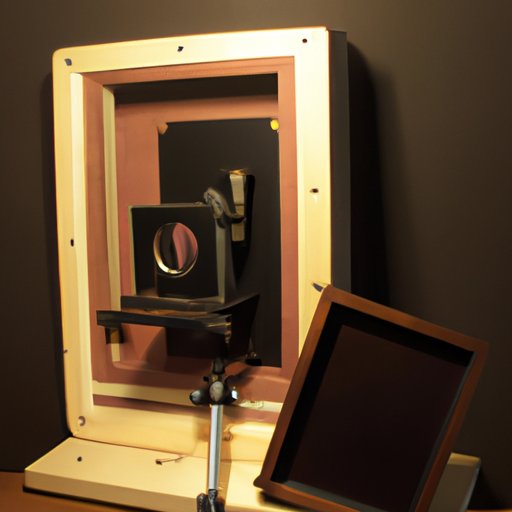Introduction
Photography has come a long way in the past two centuries. From the invention of the camera obscura to the development of digital cameras, photography has revolutionized the way we capture and view images. But what often gets overlooked is the impact that early photography had on art history. In this article, we’ll explore the early form of photography that was used to replace painting.

A Look at the First Cameras Used to Replace Painting
The invention of the camera obscura marked the beginning of photography as we know it today. The camera obscura, which translates to “dark room” in Latin, was first developed by Chinese philosopher Mo Ti around 400 BC. The device consisted of a dark box with a tiny hole in one side. Light would enter through the hole and project an inverted image onto the opposite wall or surface inside the box.
Over time, the camera obscura was improved upon and refined. By the 16th century, portable versions of the camera obscura were being used by artists to draw scenes from nature with more accuracy than ever before. Soon, the camera obscura became an essential tool for painters, allowing them to capture accurate representations of their subjects.
How Photographers Captured the World Before Digital Photography
The first successful form of photography was the daguerreotype, invented by French artist Louis Daguerre in 1839. A daguerreotype was a single photograph taken on a sheet of silver-plated copper. To create a daguerreotype, the photographer would expose a sheet of sensitized material to light, then develop it using fumes of mercury vapor. This process produced a detailed image on a highly reflective surface.
Daguerreotypes quickly replaced painting as the preferred method of capturing images. They were much faster and easier to produce than paintings, and the results were far more realistic. This new technology enabled photographers to capture the world around them in ways that had never been possible before.

Analyzing the Differences Between Paintings and Early Photographs
It’s important to recognize the differences between paintings and early photographs. On a physical level, photographs are much more detailed and precise than paintings. They also provide a more accurate representation of the subject matter, since they don’t rely on the artist’s interpretation. On an emotional level, photographs can evoke a sense of realism and immediacy that paintings can’t achieve.

Understanding the Cultural Significance of Early Photography
Early photography changed the way we perceive images. It allowed us to capture moments that would otherwise be lost forever and opened up new possibilities for art and expression. It also had a significant impact on social movements, providing a powerful visual testimony of events such as the American Civil War and the Industrial Revolution.
Conclusion
Early photography had a profound impact on art history. The invention of the camera obscura and the development of daguerreotypes allowed photographers to capture the world around them with unprecedented accuracy and detail. They also provided a more realistic representation of the subject matter than paintings could achieve. Finally, early photography changed the way we perceive images, making it an invaluable tool for documenting history and expressing ideas.
(Note: Is this article not meeting your expectations? Do you have knowledge or insights to share? Unlock new opportunities and expand your reach by joining our authors team. Click Registration to join us and share your expertise with our readers.)
